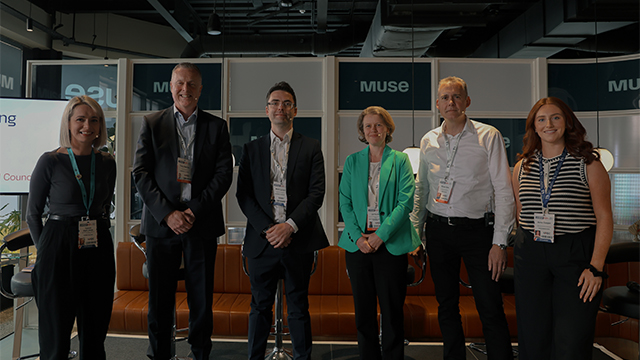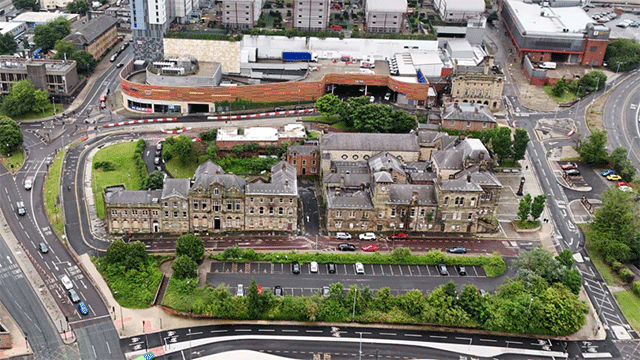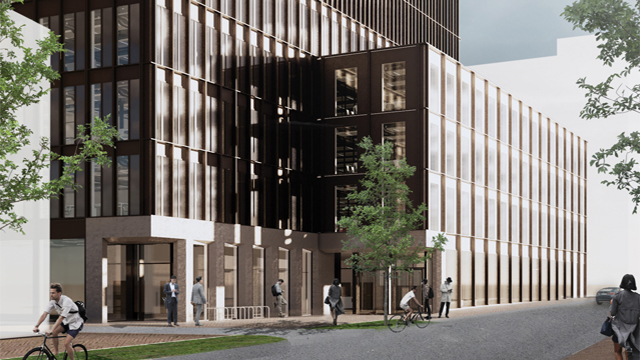Inclusive design in the workplace could finally move up the agenda for employers in 2023, with the need to attract and retain diverse talent helping to shine much-needed light on the issues involved.
Incorporating inclusive design remains a relatively low priority for office occupiers, according to CBRE research. A social sustainability survey carried out by the agency last year found that 32% of its clients felt that inclusive design was “not important at all” or even “not relevant” to real estate.
On the upside, 36% said that it was either “very important” or “so important that the decision would turn on it”.
That is at least cause for optimism, and in a report issued by CBRE this week, the firm said there is a huge opportunity within the real estate industry to embrace inclusive design, not least because it can play an important part in creating positive sustainable impact and supporting ESG and DEI goals.
Toxic workplaces
Jennet Siebrits, CBRE’s head of research, said that a toxic workplace culture was a primary reason that continually leads to attrition, suggesting that lack of inclusion and respect are common deciding factors.
“People don’t stay where they don’t feel they belong, and the pandemic has only magnified this,” she said. “Making a space usable, flexible and adaptable through inclusive design is key to supporting people.”
For the built environment, this means going beyond simply supporting physical access and removing barriers for those with accessibility issues. Inclusive design ensures that a workplace is suitable, comfortable and usable for the full range of human diversity.
The CBRE report – Building Belonging – says that human and digital components must also be considered when planning a space. For example, in addition to physical elements such as designated collaborative and quiet areas, the human desire to socialise and the need for appropriate training on digital tools must be considered for a space to be fully inclusive and accessible for all.
Siebrits said: “Inclusive design benefits everyone and is incredibly important in attracting a diverse range of talent to the workplace. A workplace that promotes inclusion enables all employees to feel welcome and perform at their best, but sadly incorporating inclusive design remains a relatively low priority for office occupiers, despite its growing importance for organisations to attract and retain diverse talent.”
Sense of belonging
Georgina Fraser, head of human capital at CBRE, said offices now had to compete with homeworking and the hyper-personalisation that provides.
“The spaces that we design and manage should be deliberately and thoughtfully created for people to feel safe and that they belong, while enabling them to do their best work. We need to create and maintain spaces that do this for all users, regardless of age, gender, ability, neurodiversity, ethnicity, religion, sexual orientation, gender identification or reassignment.
It is a theme that has been frequently raised by EG’s Future Leaders.
Knight Frank partner and EG Future Leader Sophie Levenson recently highlighted that the physical qualities of a workplace can favour those “who are dominant and extroverted”.
She pointed to some straightforward steps that can be taken to ensure that a wider spectrum of personalities is accommodated.
“Nearly everyone has some introverted qualities, and it is important to ensure we are listening to these people, giving them a voice,” Levenson wrote. “This should extend to our workplaces, with the provision of better-quality spaces that allow for reflection, as well as ensuring people have the freedom to use them without being seen as antisocial or not a ‘team player’.”
She added: “Catering for those with greater neurodiversity would also help transcend differences that may be seen between genders and ethnicities.”
Accessible shops
Away from the office sector, Isabelle Walters, an apprentice surveyor at Savills, highlighted the need for shopping centres and retailers to do better when it comes to supporting customers with accessibility issues.
Speaking at EG’s 2022 Future Leaders programme earlier this month, Walters used her own experience of navigating shopping centres with her mother, who has multiple sclerosis, to highlight some everyday problems, such as out-of-order lifts, steep ramps and disabled toilets that are used by everyone – or even as extra storage space.
With a 19% vacancy rate across shopping centres, Walters suggested that an opportunity was being missed to provide safe and secure storage for wheelchairs, to allow their users to sit in a restaurant without worrying about “being in the way”.
Landlords and operators should be investing to “modernise and make better what is already there”, she argued.
Collaborative built environment
Suzan Ucmaklioglu, part of the EG Future Female Leaders project in 2020 and now an architect at Foster + Partners, also learnt about the “transient nature of physical ability” through her father’s diagnosis of MS.
Ucmaklioglu hoped to encourage “a greater range of diverse and inclusive communication to result in a truly diverse and collaborative built environment fully functioning for the end user”.

The sector’s current leaders are also looking to raise the bar. Stephanie Hyde, JLL’s UK chief executive, recently called for the industry to take the same level of emergency action on DEI as it is doing on climate change.
“Diversity, equity and inclusion is crucial to the success of businesses and needs to be embraced in the same way that environmental, social and governance issues have been,” she said.
They and many others will be working to ensure that inclusivity plays a role in the design of the built environment in 2023.
How to overcome inclusive design barriers
The CBRE report identified five key areas where organisations can overcome barriers to inclusive design:
1. Senior leadership buy-in
For behaviours, mindsets and values to truly change, leadership teams must lead by example. If leaders understand the benefit of initiatives before they are launched, they can be instrumental in promoting and championing them.
2. Creating a baseline
Organisations should take the time to understand their situation as a first step towards identifying gaps – for example, by undertaking an assessment by engaging with stakeholders and employee networks or engaging a specialist.
3. Keep up to date on new ideas
Organisations should consider connecting with local charities and organisations with the resources to help to accelerate progress.
4. Consider inclusive design throughout the entire property life cycle
Opportunities to consider inclusion are not limited to refurbishing an office. For example, when selecting a new office building it is important to consider its location in terms of accessible transport links and access to nearby green space.
5. Engage a specialist consultant
Engaging an expert consultant can help to navigate inclusive design and ensure the latest legislation and best practice guidelines are adhered to.
To send feedback, e-mail julia.cahill@eg.co.uk or tweet @EGJuliaC or @EGPropertyNews











